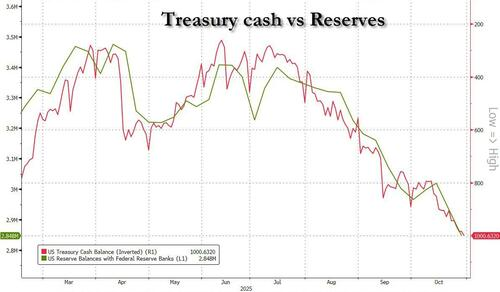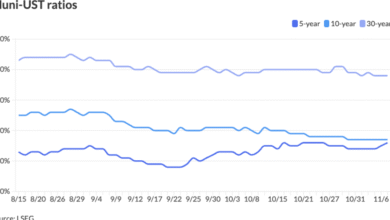The U.S. market is bracing for a major impact as a wave of Treasury issuance hits next week, potentially exacerbating liquidity concerns.

A massive wave of US Treasury issuance is set to hit the market next week.
In the just-concluded week, nearly USD 1 trillion was wiped off the market value of tech giants, dragging down the Nasdaq to its largest weekly drop in seven months. $Nasdaq (NDAQ.US)$ Concerns over high valuations, weak economic signals, and a decline in consumer confidence collectively formed the backdrop for this round of sell-offs.
To make matters worse, the US Treasury plans to auction a total of USD 125 billion worth of Treasury bonds across maturities next week. In addition, the market expects roughly USD 40 billion in investment-grade corporate bond issuance. Within a shortened trading week due to holidays, such concentrated bond supply will pose a significant test to market liquidity.
This upcoming wave of debt issuance coincides with a “warning signal” from key liquidity indicators in the US money market. The government shutdown has forced the US Treasury to hoard cash, significantly draining market liquidity—an effect comparable to multiple interest rate hikes—making any additional funding needs potentially amplify market volatility and risk.
The impending surge in US Treasuries tests the market’s ability to withstand pressure.
According to the US Treasury’s quarterly refunding plan, next week will see a dense schedule of Treasury auctions. The specific issuance arrangements are as follows:
On Monday, USD 58 billion worth of 3-year Treasury notes will be auctioned,
On Wednesday, USD 42 billion worth of 10-year Treasury notes will be auctioned,
And on Thursday, USD 25 billion worth of 30-year Treasury bonds will be auctioned.
All these securities will settle by November 17. With the bond market closed on Tuesday for Veterans Day, this means that a massive amount of supply will be squeezed into a compressed trading week.
Brian Smith, Deputy Assistant Secretary of the U.S. Treasury, stated that this bond issuance aims to refinance maturing debt and raise approximately $26.8 billion in new funds from private investors.
He also noted that the Treasury plans to maintain the current auction sizes for nominal coupon bonds and floating-rate notes at least until early 2026.
Moreover, Smith emphasized that the monthly auction sizes for 2-year to 30-year Treasury securities will remain stable through January. The U.S. Treasury will rely on weekly Treasury bill auctions and cash management bills to address short-term borrowing fluctuations.
The department plans to slightly reduce the issuance of short-term Treasury securities in December, with expectations that the scale of Treasury auctions will rise again by mid-January.
“Invisible Tightening”: Liquidity warning signals have been triggered long ago.
Next week’s Treasury issuance has drawn significant attention as it is expected to impact an already fragile liquidity environment.
Several key indicators of the U.S. financial system have recently shown widespread alarms, indicating that the market is facing an increasingly severe liquidity crisis.
On October 31, the Secured Overnight Financing Rate (SOFR) surged by 22 basis points, widening the spread over the Federal Reserve’s interest rate on excess reserves to its highest level since March 2020.

According to ICAP data, the general collateral repo rate this week continued to fluctuate significantly above the Federal Reserve’s policy rate range.
The root cause of the liquidity crunch lies in the sharp expansion of the U.S. Treasury General Account (TGA) balance over the past three months. To address the government shutdown, the Treasury withdrew more than $700 billion in cash from the market, causing its TGA balance to surge from approximately $300 billion in July to exceed $1 trillion.

This action has directly led to the Federal Reserve’s bank reserves dropping to their lowest level since early 2021, with foreign commercial banks’ cash assets plunging by over $300 billion in four months. Analysts believe that the tightening effect of such a large-scale liquidity withdrawal is equivalent to several interest rate hikes.

Mark Cabana and Katie Craig, liquidity experts at Bank of America, had previously warned that the deterioration in funding conditions exhibits dangerous self-reinforcing characteristics. If key indicators continue to worsen, it could trigger a chain reaction similar to the 2019 repo crisis.
Editor/KOKO






